PROs, the ELITE and certain amateurs are well aware of this.
Together with Team IAFSTORE, we decided to create a specialised book for two wheel specialist athletes, i.e. cyclists, bikers or road racers.
We will face very crucial issues for the development of the racing season, and why not, we will also have some fun... not everyone does it as a job or almost, there are also amateurs and enthusiasts.
We will provide 360??° advice, the athlete will then choose the most suitable working method, according to their needs / objectives.
REMEMBER! Hard work always pays off, maybe not immediately, but it pays off! Trust me! Especially in cycling.
The guidelines you'll find in this column are dictated by ELITE teams, we are entering the domain of the PRO, no messing around, on the internet nowadays you can read about everything and the opposite of everything, we will try to bring some clarity to this chaos. Our goal is to inform athletes, to help them understand how winning teams work and open the door to the world of cycling that matters.
We will address issues of supplements, nutrition and, of course, indoor and outdoor training.
OK, I think I have bored you enough, let's get serious now.
Informative articles on nutrition and supplements
You could write a thesis on the subject of nutrition and supplement and maybe it still wouldn't be enough.
We are living in the information age, today's innovation and state of the art technology, is superseded and obsolete tomorrow.
If you do not update constantly, you get left behind, obviously no one will wait for you!
You read a very interesting article on the internet, you think you have found the solution, then suddenly you discover that it has been refuted by authoritative scientific journal. Even at the academic level (university), the situation is no better, we learn about things that are already outdated.

When a text is printed, it is already old, outdated, new studies update what has been written, but what matters are the principles. As often happens, people do not know the real meaning of a concept, it is almost inevitable that it will be misinterpreted generating cases of false dichotomy, the fallacy of seeing things in black and white.
A possible solution is to start from the principles and customise them as needed. After all, development has been the key to survival.
The future is more important than the present (you already know that), if you have arrived at this article, it is because you are looking for something. What?
We, the IAFSTORE Research & Development Team, will try to clarify.
As every year, you happened to follow the Tour of Italy and you surely heard talk of nutrition and supplements, why? Try to think?
Your car uses fossil fuel to run, you oxidise energy substrates (food), a mixture of sugars, amino acids and fats. The chemical energy created from food digestion / assimilation is transformed into mechanical energy (power on the pedals).
The famous phrase "we are what we eat" in part focused on this concept. Over time, eating healthily and taking care of the quality of food consumed improve the composition of the body (more muscle, less fat).
Remember that having more muscle equates to better performance, better health and a faster metabolism.
Presentation
We will start from where you are right now and we will indicate a direction.
It will be up to you to follow the path, because training is the stimulus, but without a sound nutritional base, there is no benefit ... but that's another story.
We will simply provide the information and the tools to understand how to behave before, during and after training, what to consume and when. Understanding how the human body works is essential. Being masters of the concepts is wonderful.
The role of supplements in cycling
We should point out that supplements should not be seen as a form of doping, but rather as a winning strategy to help you recover sooner and better, the circumstances required to workout productively with the aim of improving performance.
The biochemical and physiological processes are different for each individual. Every athlete has their own genetics, with personal training and recovery times. The body's ability to be able to adapt to the stimuli it receives and its great resilience allow us to continuously push on the accelerator.
Each workout should go beyond the limits of the previous one, in order to continually improve. The dividing line between success and despair is very thin, it will be your determination that makes a difference.
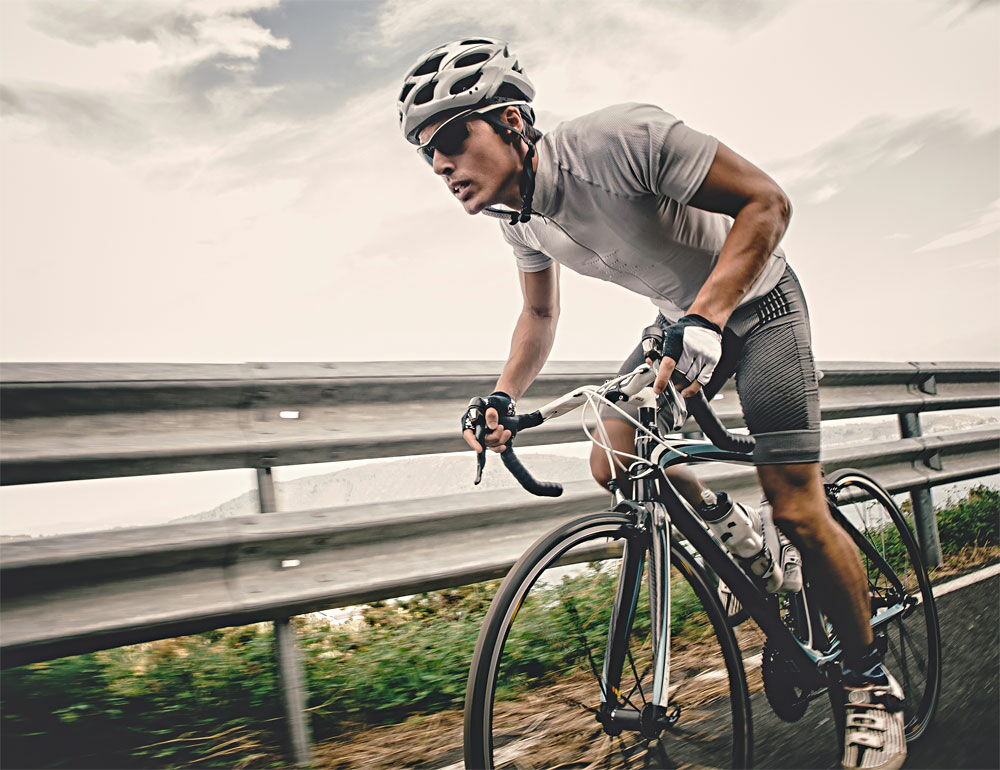
However, it needless to repeat that supplements will surely make a difference, especially from the point of view of muscle recovery.
The perfect "human body" machine has no limits, if properly stimulated and with the proper recovery, it can be achieve an unbelievable level of performance.
"Many Elite athletes, trainers and coaches would argue that this rational system has been practised successfully for years but, fortunately someone would say, not everyone knows about it".
We do not want to upset your eating habits if you are all right as you are, carry on, but remember that it costs nothing to try! ... and if you like it then? ... you feel more energetic during training? This is the the best time to experiment, this is what almost all the ELITE do. Away from competition, without too much stress, they look for winning solutions to be used during the year.
Useful philosophy:
- Experimenting is always the key to success
- Practice always comes before theory
- You learn from your mistakes! This is the most important lesson!
- Nothing works immediately, it takes time
- ...only those who know choose, otherwise you just think you are choosing...
Nutrition
Calorie distribution, remember this phrase.
Switching from a difficult life, where work was done manually, all day in the fields, to an easier, more comfortable life, sitting behind a desk, sitting in the car, sitting everywhere ... makes all the difference to the metabolic rate. For this reason food intake must follow a smart strategy.
The ingestion of carbohydrates, especially after training, is a winning strategy as it quickly restores glycogen in the muscles and liver, depleted due to training.

Resynthesis occurs faster in the immediate post workout phase, due to the movement of GLUT4 (type 4 glucose transporter - glucose transporters in muscle tissue) to the plasma membrane. Small medical insert "If the Glut-4 glucose receptors of the cell membranes are stimulated only by the increase in blood sugar (large meals without training), this is catastrophic for the metabolic rate. The immediate effect is a tendency to gain weight but in the long run you end up with insulin resistance and type 2 diabetes". We are not in a position to provide information on the related diseases, though! A few words to the wise. On the other hand, if they are brought to the surface by physical exercise, by cellular AMPK, for non-insulin-dependent processes, insulin sensitivity improves. What do we understand from all this?
If we want to stay lean and efficient we must focus most of the calories in the hours that coincide with the training, the output in the previous meal and the recovery meal at the end of the day. Following sports nutrition guidelines, whole grains are preferable to refined ones. Our choice would be organic wholegrain, but you can also consume refined grains without worrying too much.
Another interesting solution are legumes. Legumes are an important food because they are low in fat and high in fibre, useful for the intestine. They contain phosphorus, calcium and iron, and are rich in vitamin C. Dubbed the "meat of the poor", thanks to cheap protein accessible to all groups in society, legumes more than ever represent a resource for the future, being easy to cultivate and cook and therefore a natural alternative to meat, which is too costly in environmental and energy terms and considered no less than harmful to human health by "extreme nutritionists".
We are not of the same opinion, however, we leave the final choice to you. Whole grains and legumes could be an ideal meal, complete with all the macro-nutrients, good and healthy. Remember that intestinal health is essential to be able to assimilate food well.
Hydration
Metabolic exchanges require cellular hydration, consumption of fruit and vegetables is highly recommended and will help natural cellular hydration.
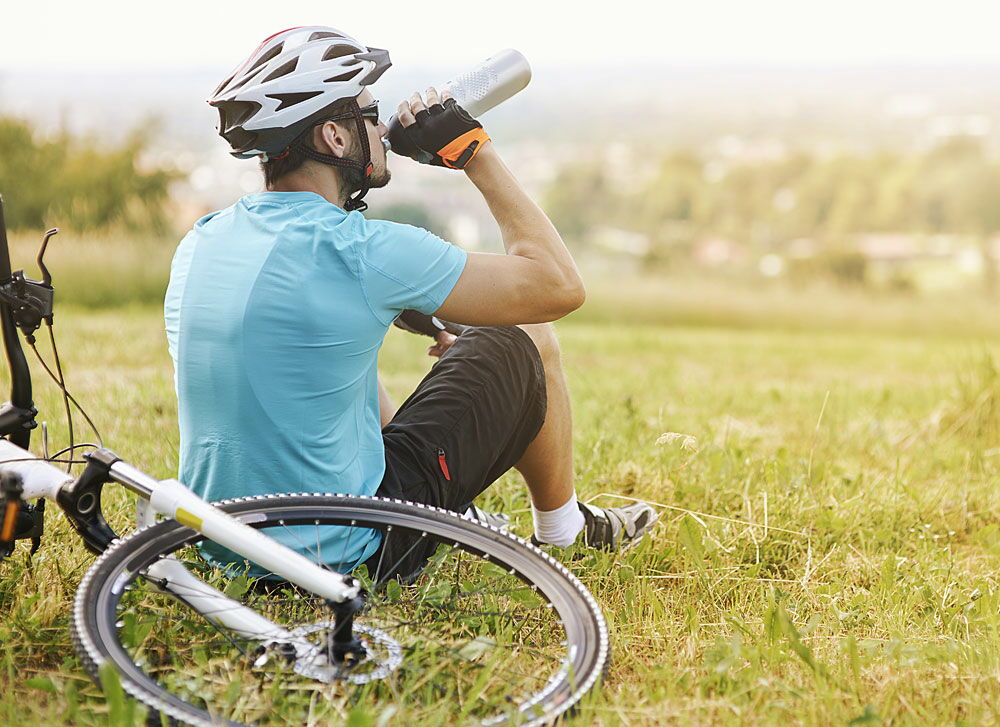
Hydration provided by water is taken for granted and is essential during endurance training.
Supplements
Multivitamin / Multimineral
In everyday life, we often hear about antioxidants. But what are they? Antioxidants are substances that trap free radicals.
Free radicals are molecules that are formed in the body during normal metabolic processes, it is believed they are the primary cause of ageing and the cause of many diseases.
The potential benefits of vitamin, mineral and fibre supplements do not counteract the damage that anti-nutrients and free radicals can cause. Free radicals follow us everywhere, as they are linked to oxygen, the life-giving element. Yes really! Breathing creates free radicals!
Intense training = many free radicals.
Pollution and stress = many free radicals.
The vitamins consumed with food are now no longer able to meet the daily requirement of an athlete. "Forced" cultivation, forced ripening, air and water quality all make the situation worse.
It is essential for all sports people to take multivitamin/multimineral supplements. The vitamins, minerals, metabolic co-factors, the adaptive substances and balanced macro-nutrients allow the physiological balance that is changed after an intense muscular work to be restored.
Some studies have shown that the body is more susceptible to infection within the 72 hours after endurance exercise. A good antioxidant strategy could also be achieved with vitamin C or ascorbic acid, another great supplement for our immune system.
Omega 3
Appreciable studies have shown that omega-3 reduces blood triglycerides, which are a sign of cardiovascular diseases and, what is more important, they exert powerful anti-inflammatory effects in the body.
Out-of-control inflammation is the basis of most serious diseases, such as cardiovascular disorders, cancer, diabetes and brain degeneration.
One of the reasons why these diseases are so widespread is that, normally, our diets do not provide a balanced dose of fatty acids, i.e. we consume too many omega-6 fatty acids and not enough omega-3, only present in significant quantities in fatty fish.
Consuming omega 3 fatty acids in the diet leads to improved vasodilation, improved oxygen delivery to active muscles and reduced blood pressure. All prerogatives for better muscle recovery. Many cardiac patients are also treated with Omega 3 fatty acid supplements.
Carbohydrates in liquid form (Vitargo, Maltodextrins and Fructose)
When the blood sugar level drops below the physiological limit (5mmol / l), performance is rapidly compromised. Carbohydrates in liquid form are an essential supplement for endurance athletes or long training sessions. Their use is essential during output, delaying the natural degradation of muscle glycogen, which is essential for optimal energy yield.
Using fructose may be a smart way to quickly restore liver glycogen, but do not overdo it! Each athlete uses his/her own strategy, there are those who take Vitargo before and Maltodextrins during and those who do the opposite.
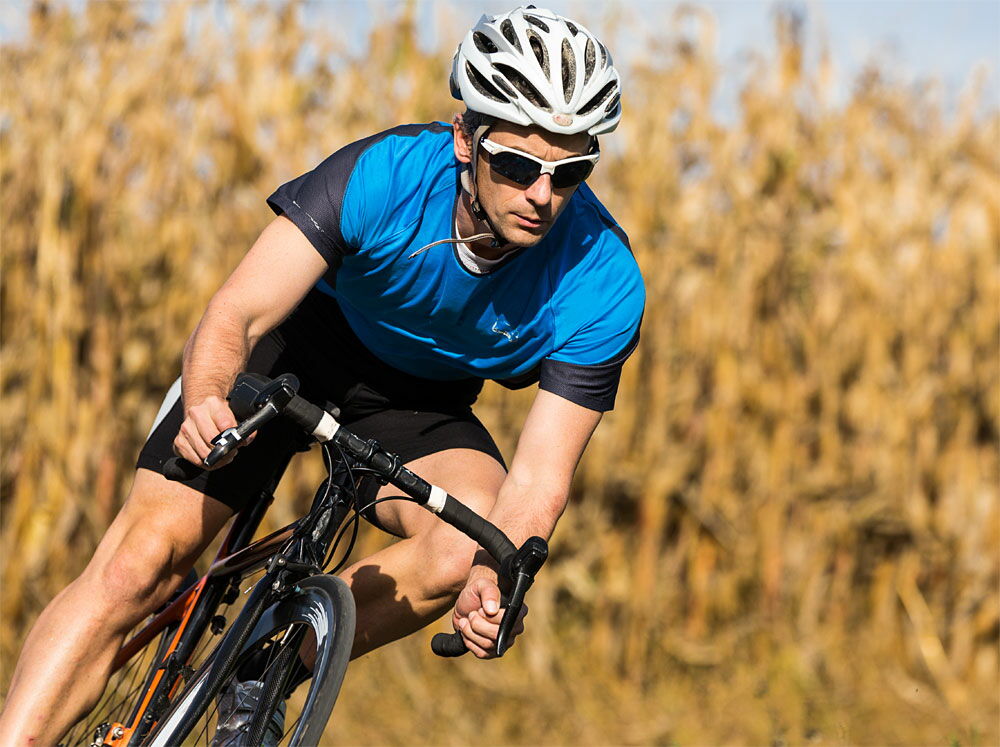
There are those who prefer to eat bars or sandwiches, this is certainly more pleasant but less functional in terms of performance and convenience.
The final performance (result) depends on the ability to dose energy and choose appropriate supplements. The use of researched formulations will prevent critical conditions "taking root" maybe only a few kilometres from the finish.
BCAA
Branched chain amino acids (leucine, isoleucine, valine) also known as BCAA, over and above strength activity, are also particularly important in those disciplines aimed more at "resistance".
They do not only work to metabolise protein (anabolism), they also effect the central nervous system by decreasing the production of tryptophan (cerebral neurotransmitter) precursor of serotonin (5-HT) and increase resistance to fatigue and focus during the exercise.
A further advantage of branched amino acids is the fact that their metabolism does not produce lactic acid, the accumulation of which is a notoriously limiting factor in endurance performance.
The carbon skeleton of the latter is used to produce energy by the muscle via the citric acid cycle, while the amino acid group is transferred first to glutamate and then to pyruvate, resulting in the formation of alanine (see below). This amino acid is then released into the blood and transported to the liver, which, in turn, removes the amino group and uses the resulting pyruvate to form glucose, in a process called gluconeogenesis.
The newly formed glucose is then put back into circulation, in order to ensure a constant supply of energy to our muscles. These reasons may be enough to integrate them into training.
They are recommended to be used before and during output. A helpful tip is to put a portion in the flask with maltodextrin, an excellent support to sip during output.
Beta Alanine and Creatine
In all high intensity sports, where fatigue resistance is needed, beta alanine seems to improve performance through the buffering effect that carnosine amino acid has.
Consuming creatine in combination may play a synergistic role since they share the same absorption mechanisms.
Many athletes consider creatine an unsuitable supplement for cycling, great mistake! Creatine supports all processes related to creatine-phosphate and ATP (virtually all). In fact, the athletes that may have an ergogenic effect with beta alanine and creatine intake are those using aerobic energy systems with sustained intensity and anaerobic-glycolytic energy systems with lactic acid production (pyruvates and lactates).
"Fast" disciplines benefit as carnosine has a buffering effect on the production of lactic acid. While creatine rapidly produces new ATP. To verify what has been said, just try! With all the cards in hand, it is always individuality that prevails.
Caffeine
It performs its main function on the central nervous system. It also increases performance by improving focus and concentration.
Anhydrous caffeine is more powerful than the classic cup of espresso, which nonetheless remains a good solution, especially in terms of taste, the pleasure of a good espresso (for those who like it) maybe in good company cannot be denied, but that is another story.
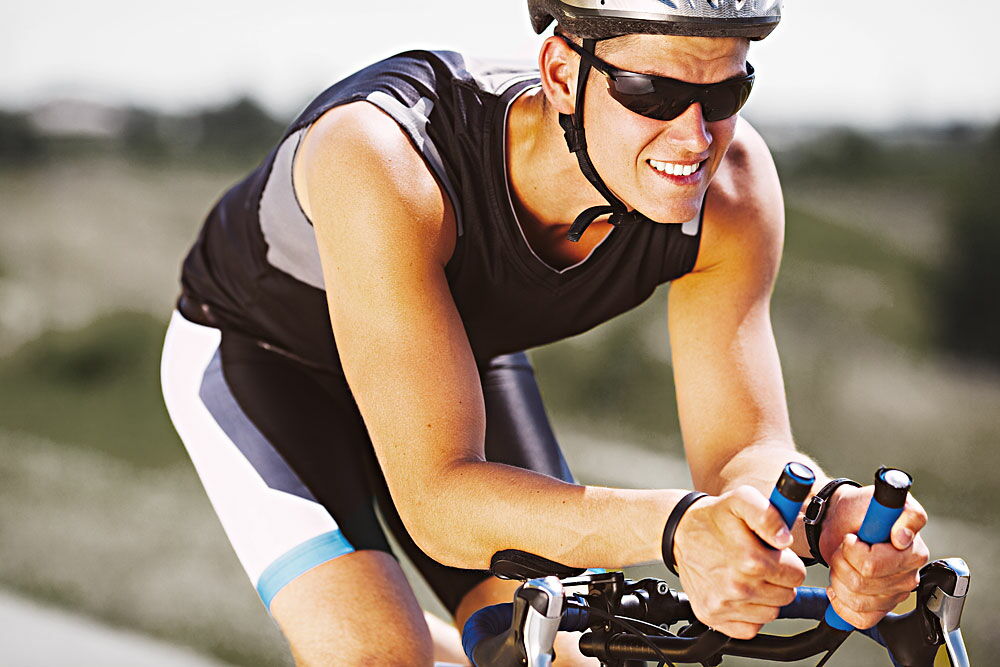
Absolutely to be avoided if you suffer from heart disease.
Acetil-Carnitine
It is normally used in fat burning strategies, while its energy producing action is underestimated.
It plays a key role in this process because it allows the transport of Acetyl CoA inside the mitochondria (energy powerhouse) allowing the start of the Krebs cycle.
According to some studies carnitine also allows the expulsion of the acetyl CoA group from the mitochondrion when, as a result of prolonged endurance activity, the concentration of acetyl is lowered too much and, as a consequence, the cell is no longer able to use glucose as an energy source.
From these data, it was thought that carnitine supplements, in amounts greater than those assimilated by food, could somehow encourage slimming that improves performance in endurance athletes.
Great synergy combined with caffeine.
Functional recovery
The most important part of winter preparation is recovery from the season just passed.
Recovery that is not only physical but also mental therefore physiological and psychological.
I am not, however, recommending sitting on the couch with chips and beer in front of the TV!
I am recommending dedicating more time to the family to a hobby, and why not! Take time for a trip, maybe to hot countries.
The first piece of advice is to completely switch off for at least one or even two weeks, depending on your agonistic commitment during the year.
Now don't tell me tell that after a 10 day STOP you have become couch potatoes if you were not already before; I see you give a hidden smile, if you have a racing car in the garage and you take a family vacation to exotic countries, let's say for 10/15 days at the most, when you return you will find it is still there in the garage, maybe dusty, flooded, but still a racing car not a minivan.
The same is true for your body. Let it recover well, it will perform even better if stimulated to the right extent, in the best way, but this is a job that pertains to us.
The new preparation will make a difference!
Adjusting /conditioning, indoor and outdoor activities
Once the almost obligatory functional recovery period (even PROs take an obligatory rest) is over, the general preparation phase begins.
Usually at this time of year, they look at organising and improving any postural problems, lower limb length discrepancies, lordosis and kyphosis that are not too functional, without neglecting muscle strengthening.
Massages and osteopathic treatments are recommended and postural reprogramming
only in special cases. This should be substantially a complete RESET of the psycho / physical state of the athlete. It will be the task of the Athletic Trainer, to structure a personalised work schedule (beware of trainers who deliver the same work to all their athletes), every athlete deserves the right attention. This might be OK for a beginner, but not for a PRO, or for trained athletes with years of competition behind them.
For all those who are not fortunate enough to be able to afford this kind of Athletic Trainer, we, the IAFSTORE staff, decided to offer practical and functional advice for optimal winter preparation, always in general terms.
FIRST PHASE - Enhancement and transformation
The enhancement phase is very important, we need to increase our engine's capacity and our structural and aerobic growth, partly lost if we have done the correct functional STOP, so recommended.
What better time if not the winter, the days are dark and cold, so closing yourself inside a fitness centre can also be enjoyable.
We recommend resistance training or workout with overloads (weight room) in conjunction with aerobic activity, always and only using your own mechanical means "your speciality".
We strongly do not recommended spinning and running, if you value your joints, forget them. Transformation will always be carried out using your own mechanical means. Of course, we are assuming that your riding position is optimal, perhaps looked at by a bio-mechanic, most issues arise from a bad "saddle position"!
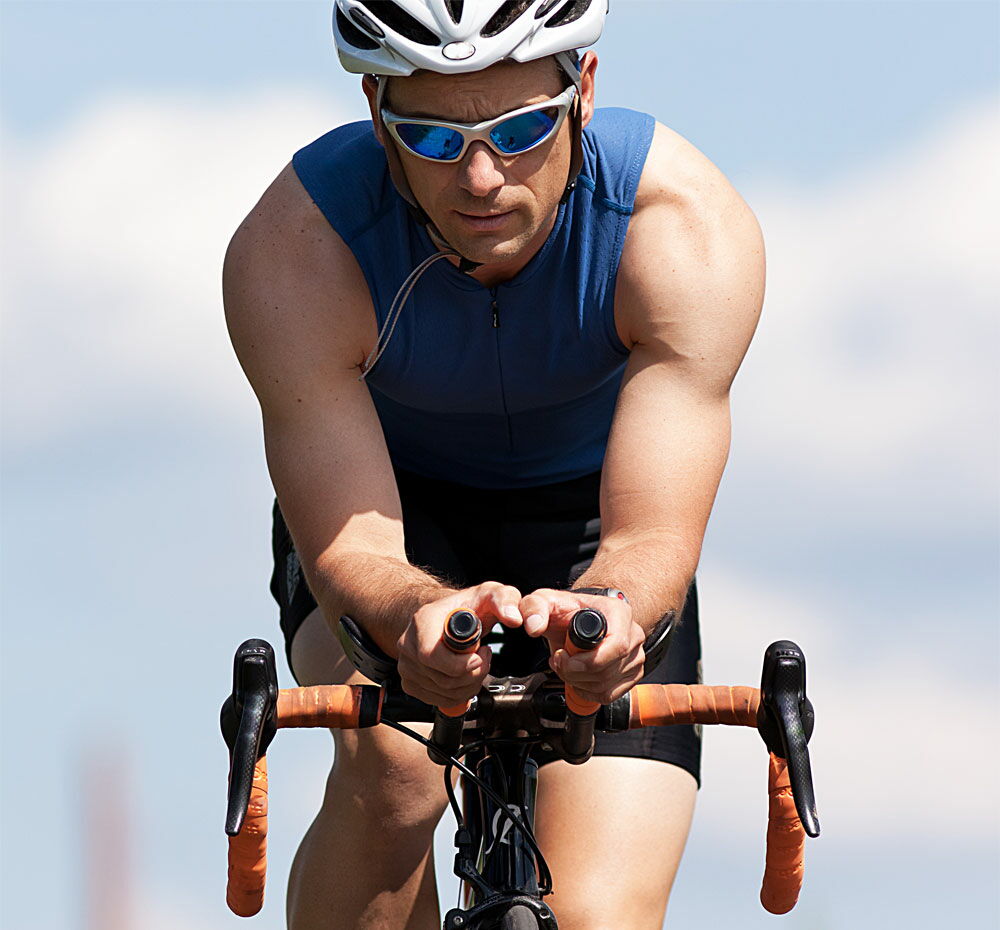
Now let's look at the subject of the weight room that is
fundamental in this period for strengthening the COREor the abdominal and lower back muscles, and very important for correcting postural defects that developed during the year or improving any improper posture neglected for some time. After the CORE, we are going to train all the muscle groups in the body.
Many athletes make the common mistake of only strengthening the lower limbs and nothing could be more wrong.
The legs are already powerful, it is the upper part of the body that is weaker. Get a Full Body card from your gym instructor or personal trainer to train your entire body.
By strengthening the upper limbs, chest and back, you will discover a better equilibrium and a structurally more balanced body. The last piece of useful advice, remember to always end your training session at the gym with stretching or other joint mobility exercises.
For anyone who wants to try alternative strengthening methods that do not involve the weight room, but are still indoors, we recommend Cross Training or Calisthenics.
In the latter case, the instructor will provide the training quality. Ask about where to find specialised centres and be sure to carefully check the instructor's training. We are talking about a certain level of functional training, a lot of fun, but also very challenging, very dynamic, where aerobic activity will be activated and enhanced. Strength work should be enjoyable, so look for an environment that suits you as an individual, it should not be a chore. If it is done with passion, the results will be twice as good.
Once strength work is done, all you need to do is transfer your mechanical means. The solution adopted by many athletes are boring rollers. The come in all flavours but they are still boring. Watch TV, listen to more enjoyable music and make the workout less boring. There remains only consolation, the trips outside at the weekend, which will be calm in the initial period but will intensify as the kilometres increase. You will certainly notice the improvements made by the indoor strength training right away.
Work schedule
An interesting work schedule could be the following:
- Monday - rest
- Tuesday - strength (weight room - cross training, etc.)
- Wednesday - rollers 40/50 minutes in agility, enough to transform the work in the gym
- Thursday - rest
- Friday - strength
- Saturday and Sunday trips outside with friends.
The story of 1000 km done at a slow pace can be left with the Coppi generation, if you have worked hard in the gym and done some progressions, just to make it clear to your heart (myocardium is a muscle) that the season has started!
Conclusion
If you practice an intense sporting activity and have reached the age of 35-40 years, special attention to your diet is really important. It is important to try to vary the diet and always ensure the correct amount of vitamins, minerals and antioxidants to remain efficient and healthy.
Mature athletes are well aware that they can have a maximum of two optimum performance peaks during the season. Organising the right nutrition / supplements will allow you to face these times of the year in the best condition ever, and why not! Maybe even get to some unexpected results with great satisfaction.
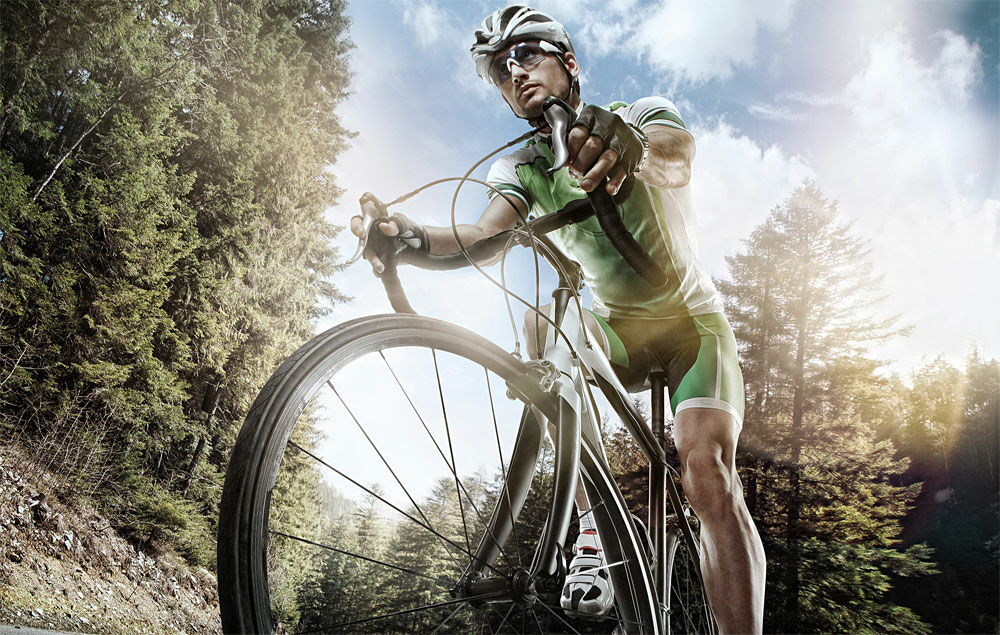
Once we arrive at the conclusions, many readers will not agree: "I eat bread and mortadella with red local wine and get even stronger" Great! Are you happy with your strategy? With your diet? Then carry on! We are simply giving some tips.
That being said, always consult a sports health care professional, of course recognised by Italian law, before making any choices. The world is full of false GURUS.
Thus, the task of finding the right path to follow remains with you. How? Learn to listen to your body, the feelings that it gives you, these are the starting points for success!
